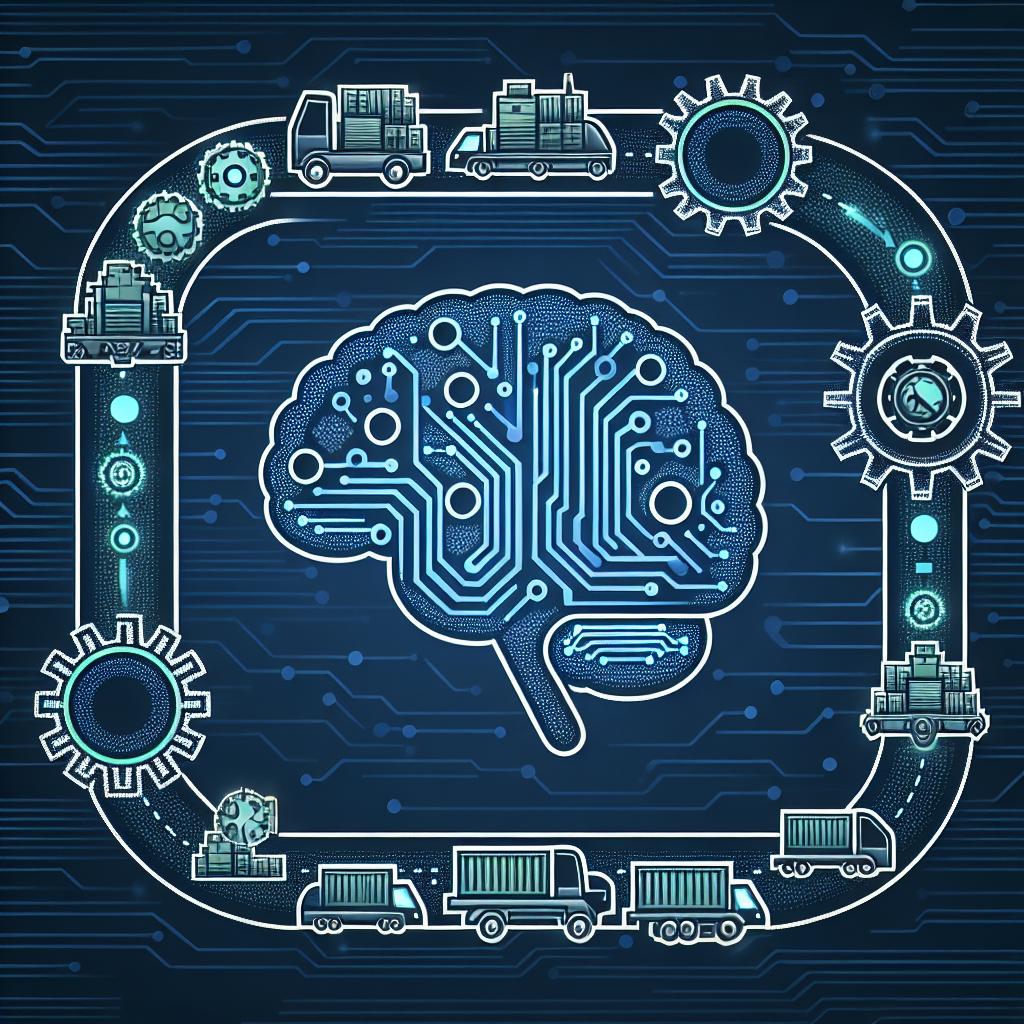The Role of AI in Supply Chain Visibility
In today’s fast-paced and globalized world, supply chain visibility has become increasingly important for businesses to stay competitive and meet customer demands. With the growth of e-commerce and the rise of consumer expectations for fast and reliable delivery, companies are under pressure to optimize their supply chains and improve transparency at every step of the process. This is where artificial intelligence (AI) comes into play, offering a range of tools and technologies that can revolutionize supply chain visibility and help businesses achieve greater efficiency and control.
AI and Machine Learning in Supply Chain Visibility
AI and machine learning technologies are increasingly being used to improve supply chain visibility and make sense of the vast amounts of data generated by modern supply chains. By analyzing data from multiple sources, including sensors, GPS trackers, and business systems, AI systems can provide real-time insights into the status of shipments, inventory levels, and production processes. This allows businesses to identify potential bottlenecks, optimize routes, and make informed decisions that can improve overall supply chain performance.
One key application of AI in supply chain visibility is predictive analytics. By using historical data and machine learning algorithms, AI systems can forecast demand, identify patterns, and predict potential disruptions before they occur. This can help businesses plan more effectively, reduce stockouts, and improve customer satisfaction. For example, AI-powered demand forecasting can help retailers anticipate changes in consumer behavior and adjust their inventory levels accordingly, leading to fewer stockouts and reduced carrying costs.
Another important use case for AI in supply chain visibility is risk management. By analyzing data from a variety of sources, including weather reports, political events, and supplier performance metrics, AI systems can identify potential risks and alert businesses to take action. For example, if a supplier is experiencing production delays due to a labor strike, AI systems can recommend alternative suppliers or suggest changes to production schedules to minimize the impact on the supply chain.
AI can also be used to optimize logistics and transportation operations. By analyzing data on traffic patterns, fuel prices, and delivery times, AI systems can recommend the most efficient routes for shipments and help businesses reduce costs and improve delivery times. This can be especially valuable for companies with complex supply chains that involve multiple modes of transportation and numerous distribution centers.
Challenges and Opportunities
While AI offers a range of benefits for improving supply chain visibility, there are also challenges that need to be addressed. One of the key challenges is data quality and integration. In order for AI systems to provide accurate and reliable insights, businesses need to ensure that their data is clean, consistent, and accessible. This can be a significant challenge for companies with legacy systems and siloed data sources, as it may require significant investment in data management and integration technologies.
Another challenge is the complexity of supply chains. Modern supply chains are often global in nature, involving multiple suppliers, transportation providers, and distribution centers. This complexity can make it difficult for AI systems to provide a complete view of the supply chain and identify potential risks and opportunities. Businesses need to carefully design their AI systems to account for this complexity and ensure that they can provide actionable insights that drive real business value.
Despite these challenges, AI offers a range of opportunities for businesses to improve supply chain visibility and gain a competitive edge. By implementing AI-powered solutions, companies can reduce costs, improve efficiency, and enhance customer satisfaction. As AI technologies continue to evolve and become more sophisticated, the potential benefits for supply chain visibility are only expected to grow.
FAQs
Q: How can AI improve supply chain visibility?
A: AI can improve supply chain visibility by analyzing data from multiple sources, including sensors, GPS trackers, and business systems, to provide real-time insights into the status of shipments, inventory levels, and production processes. This allows businesses to identify potential bottlenecks, optimize routes, and make informed decisions that can improve overall supply chain performance.
Q: What are some of the key applications of AI in supply chain visibility?
A: Some key applications of AI in supply chain visibility include predictive analytics, risk management, and logistics optimization. Predictive analytics can help businesses forecast demand, identify patterns, and predict potential disruptions before they occur. Risk management involves using AI to analyze data from a variety of sources and identify potential risks that could impact the supply chain. Logistics optimization involves using AI to recommend the most efficient routes for shipments and help businesses reduce costs and improve delivery times.
Q: What are some of the challenges of implementing AI in supply chain visibility?
A: Some of the key challenges of implementing AI in supply chain visibility include data quality and integration, the complexity of supply chains, and the need for specialized skills and expertise. Businesses need to ensure that their data is clean, consistent, and accessible in order for AI systems to provide accurate and reliable insights. The complexity of modern supply chains can also make it difficult for AI systems to provide a complete view of the supply chain and identify potential risks and opportunities.
Q: How can businesses overcome these challenges and maximize the benefits of AI in supply chain visibility?
A: Businesses can overcome these challenges by investing in data management and integration technologies, carefully designing their AI systems to account for the complexity of their supply chains, and partnering with experts in AI and supply chain management. By taking a strategic approach to implementing AI in supply chain visibility, businesses can maximize the benefits and gain a competitive edge in today’s fast-paced and globalized marketplace.

